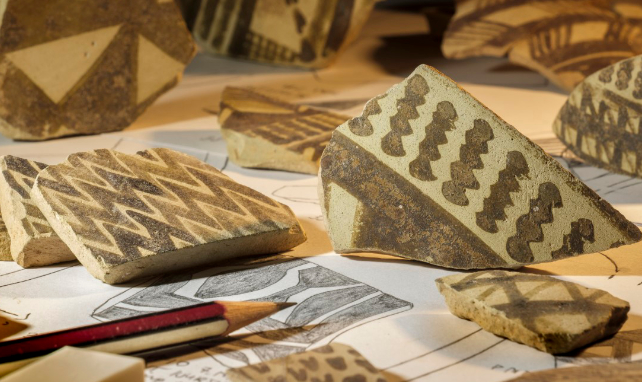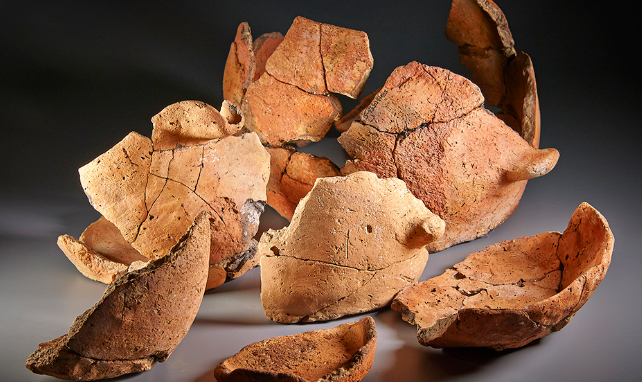Excavations by the Kuwaiti-Polish Archaeological Mission at a site in Northern Kuwait’s Al-Subiyah desert have uncovered a bizarre-looking clay head representative of the culture of a prehistoric people who flourished in the region between 5500 and 4900 BCE.
With an elongated skull, flat nose, absent mouth, and narrow, squinting eyes, the small sculpture looks well on the way to becoming another example of a ‘snake person’ figurine commonly crafted by the Ubaid culture.
The art piece is a unique finding at the Bahra 1 site, contributing vital evidence on the spread of Ubaid practices and beliefs through western Asia.
“Its presence raises intriguing questions about its purpose and the symbolic, or possibly ritualistic, value it held for the people of this ancient community,” archeologist Piotr Bieliński explains in a recent press release.
Long before the Sumerians established what is now regarded as one of humanity’s earliest civilizations, the Ubaid laid many of the foundations.
Trade networks, irrigation systems, and even landmarks such as temples emerged throughout what is now Iraq and Kuwait, developed by a culture identified today by their unique style of pottery.
Since 2009, the early-Ubaid period site known as Bahra 1 has attracted attention for unique archeological characteristics, including a structure described as a ‘cultic building’ and a layout to the architecture unexpected for its age.
Artifacts uncovered at the site also helped solve a mystery of ‘Coarse Red Ware‘ pottery. Found extensively throughout the region, sites of its manufacture had yet to be identified, making the remains of a pottery workshop at Bahra 1 a landmark discovery.

Finding examples of the pottery alongside remnants of Ubaid handiwork – with both containing plant material embedded in its clay – not only allows researchers to connect the site into a larger story of the Ubaid cultural network, but also understand the surrounding ecology of the region more than seven millennia ago.
“Early analyses have revealed traces of wild plants, particularly reed, within the locally produced pottery, while cultivated plant remains, including cereals, such as barley and wheat, have been found in the imported Ubaid ware,” says archaeobotanist Roman Hovsepyan.

Among the remarkably decorated plates and pots fashioned by Ubaid artisans are strangely slim feminine figures, typically with the heads of birds or lizards.
Referred to as Ophidian figurines for their snake-like appearance, these terra-cotta sculptures often have ‘coffee-bean’ eyes, and dots painted onto their bodies as if to represent scales.
Just what these reptilian representations might mean is currently anybody’s guess, with archeologists debating theories of their significance based on the context of their discovery. Most to date have been found in domestic settings, or in graves with other goods.
With the discovery of what could be an Ophidian fragment at the oldest known Ubaid pottery workshop in the Gulf, archeologists can extend the timing and relationship between the figurines and this fascinating culture into new territory.





